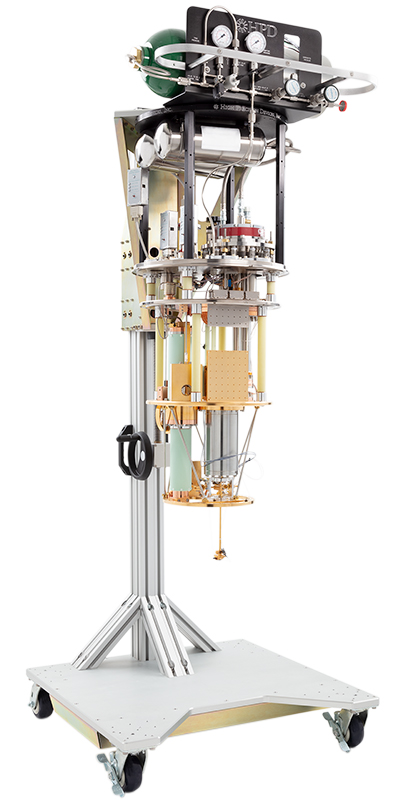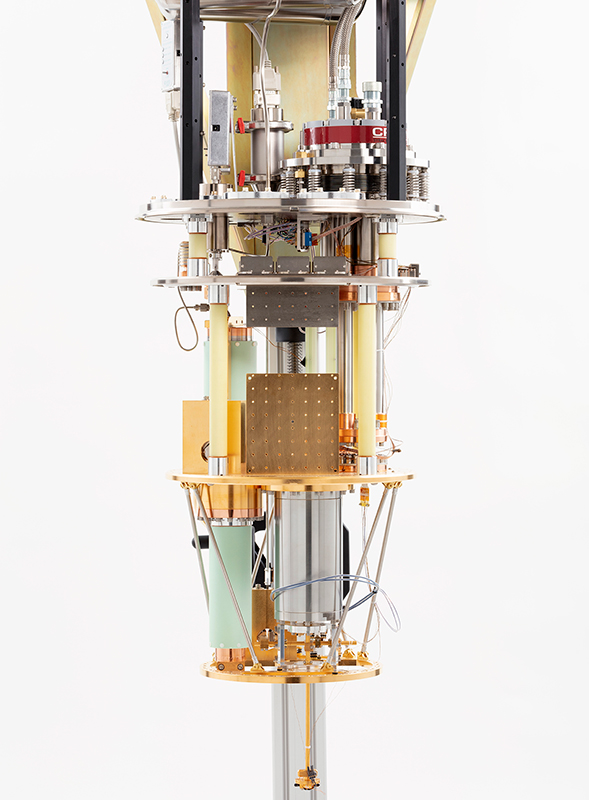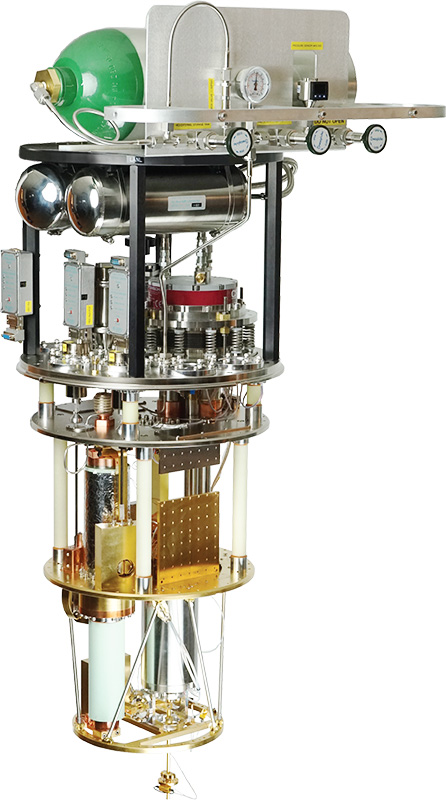Model 107
Midsize, cylindrical He-3 sorption backed ADR cryostat
Midsize, cylindrical He-3 sorption backed ADR cryostat
Looking for customer support? Ready to learn more about our products and services?
Contact Sales TodayReceive product updates and event notifications
Subscribe to Our Newsletter



The Model 107 adiabatic demagnetization refrigerator (ADR) cryostat includes a He-3 sorption cooler to provide more power than other models. It aims to support ultra-low temperature research by providing quick and affordable access to mK temperatures. Many customizable options make it easy to reconfigure to fit your needs.
This system uses a single stage ADR to reach temperatures as low as 25 mK. An ADR operates by submitting a salt crystal to strong magnetic fields. In these different states, the salt crystal will either absorb or dump thermal energy. This is used to shuttle heat away from the sample stage achieving mK temperatures. Because of the nature of this process, only a certain amount of heat can be absorbed before the crystal must be warmed up and regenerated.
With a He-3 sorption cooler backing the ADR the Model 107 can maintain a temperature of 100 mK for 75 hours under a 1 µW load. The sorption cooler also maintains a high power 300 mK intercept stage for experiments that don’t need to be as cold. It is a robust “turn-key” mK alternative to dilution refrigerators.
Applications: Astronomy, Spin QC, Photonic QC, Material Characterization, Condensed Matter Physics
Cryogenic Tools for Quantum Development
This Keysight University course is intended to introduce researchers and scientists to the basics of cryostats, and cryogenic probe systems that are used in quantum development programs. Users will learn about the components of a cryostat, state-of-the-art methods for loading a device in a milli-Kelvin cryostat for pre-characterization of qubits, and the functionality of cryogenic probing systems for characterizing devices at temperatures below 4K.
Receive product updates and event notifications
Subscribe to Our Newsletter